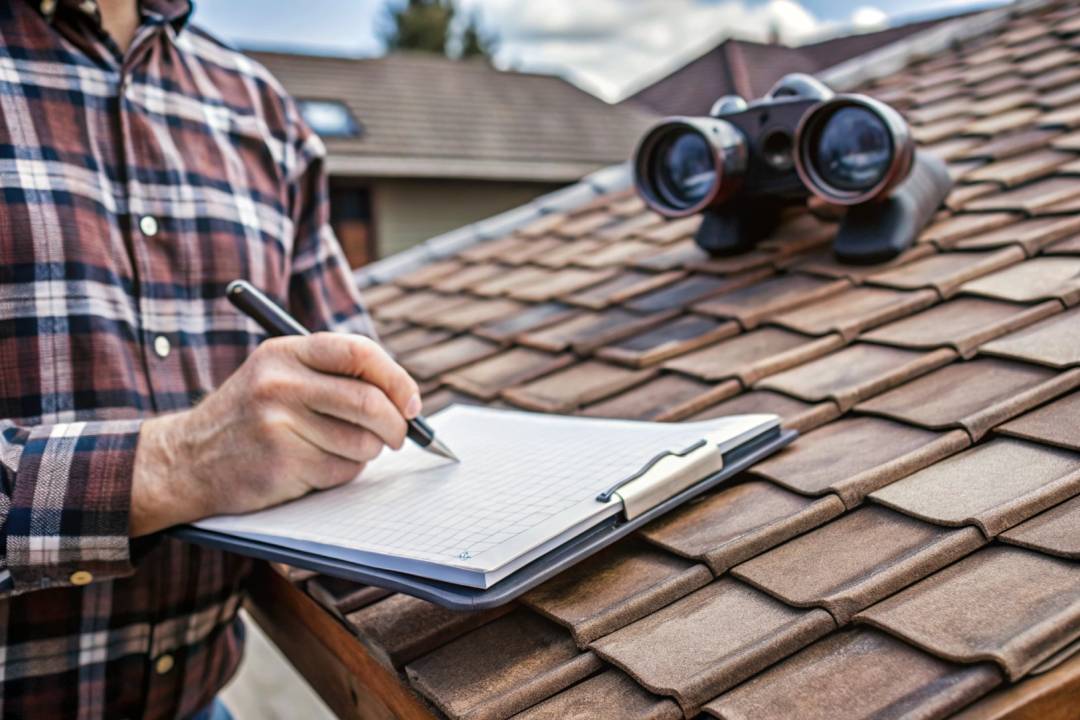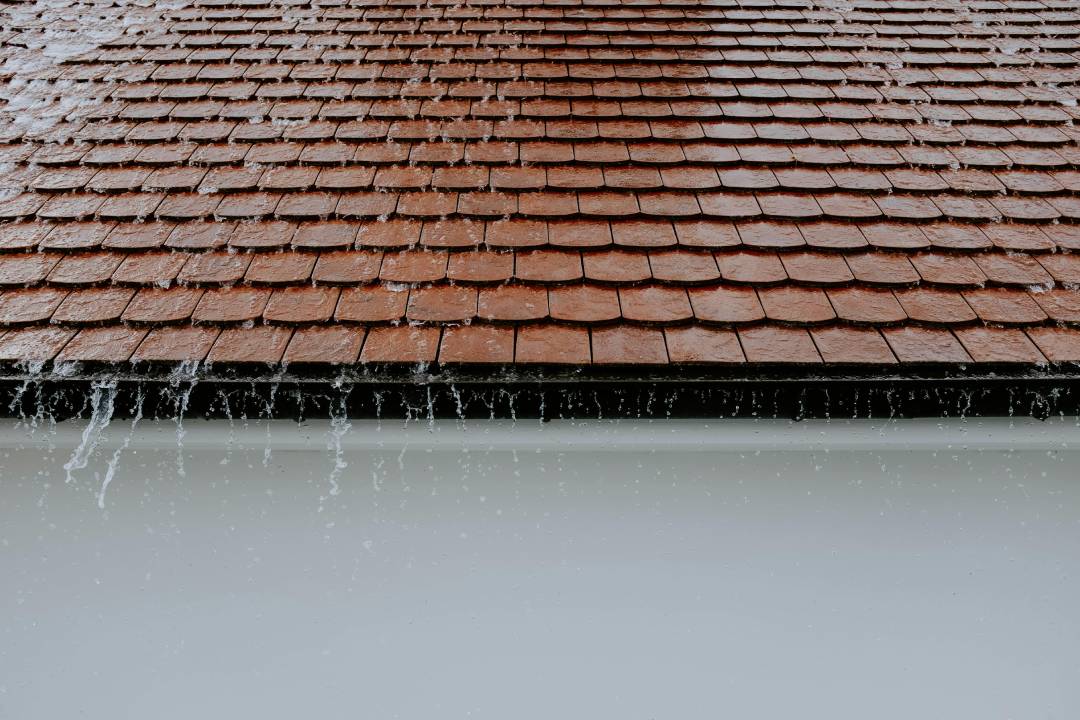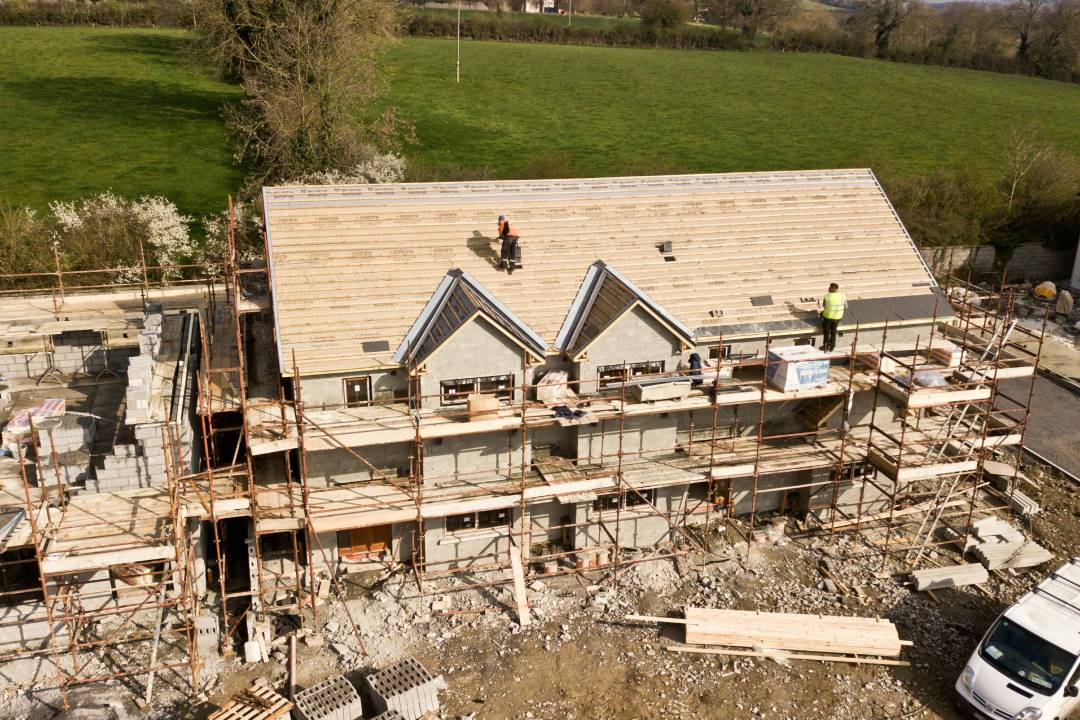When was the last time you really checked out your roof? Most Texas homeowners don’t think about their roofs until a storm hits or a leak shows up in the living room ceiling. Your roof is the first thing that protects your home from Texas’s unpredictable weather. Your roof gets a lot of wear and tear all year long because of the hot summer sun, the heavy spring rains, and the hailstorms that come out of nowhere.
A regular roof inspection does more than just keep your shingles safe; it also keeps your family safe, your investment safe, and your mind at ease. Most homeowners, though, don’t know where to begin. What do you need to look for? What are the signs that a small problem is about to turn into a big repair?
This is where this checklist comes in. In this blog post, we’ll show you the most important steps to take when inspecting a roof in Texas. In the end, you’ll know what to look for, what’s normal, and when you need to call in a pro.
Step 1: Check the Ground First
Walk around your property before you even think about getting on a ladder. This lets you see your roof from above without any risks.
What to Look For
Shingles that are missing or curled could mean that the materials are old or have been damaged by the wind.
If you see dark streaks or discoloration, it could suggest that algae are forming or that water is getting caught.
- Sagging spots are a clue that water may have hurt the roof deck.
- Accumulation of trash, like leaves, branches, or other objects, can hold moisture.
- Use binoculars to get a better look without having to climb up.
Step 2: Look at the drains and gutters
Your gutters are what keep water from pooling on your roof. If they aren’t working well, water can collect and leak where it shouldn’t.
Things that are important to look for
- Granule buildup: It’s acceptable to have a few loose granules, but if there are a lot of them, it signifies the shingles are falling apart.
- Water that can’t drain away can become caught under shingles if the downspouts are clogged.
- Rust, cracks, or parts of the home that are pulling away from it are weak places that might let water in or damage the foundation.
- You can think of your gutters as an early warning system because they often show roof problems before the roof itself does.
Step 3: Check the Flashing and Roof Penetrations
Flashing is the part of your roof that meets a wall, chimney, or vent. These thin metal strips stop water from getting in, but they can get loose or rust over time.
- Flashing Checklist
- Are the edges lifting, or is it flat and safe?
- Do you see any rust or corrosion?
- Do you see cracked or dried sealant around the chimneys and skylights?
Even small gaps can cause big leaks, especially after one of those sudden Texas downpours.
Step 4: Look in your attic
You can’t always see problems with your roof from the outside. The best clues are sometimes right above your head.
- Trouble Signs in the Attic
- Wet insulation or wood means that water has gotten in.
- If you can see the sky, water can get in too.
- Musty smells could mean mold or rot that isn’t visible.
- Decking that is sagging is a clear sign that the structure is weak.
- You should look into it more if your attic smells like a wet basement.
Step 5: After storms, be careful.
People know that storms in Texas can cause sudden, serious damage. Storm damage can be hard to see, and it can get worse over time even if everything looks fine.
List of Things to Check After the Storm
- Look for dark circles or dents on shingles that show where hail hit
- After strong winds, look for shingles that are loose or missing.
- Check the siding, fences, and cars as well. Damage in these areas often means the roof was damaged.
- Keep in mind that hail damage isn’t always easy to see from the ground. A professional can see things that you might miss.
Step 6: Don’t Forget the Little Things
Your roof has a lot of moving parts that need to be looked at, not just shingles and flashing.
Things to Look at That Are Smaller
- Are the roof vents cracked, clogged, or loose?
- Is the caulk or sealant dry, cracked, or missing?
- Fascia and soffits: Do you see any signs of rot, peeling paint, or bugs?
These may seem small, but if you don’t pay attention to them, they can let water, rodents, and bugs in.
Why it’s important to have regular inspections
Texas roofs often wear out faster than roofs in other parts of the country because the weather changes so much. An inspection at least twice a year, preferably in the spring and fall, can help your roof last longer and save you thousands of dollars on repairs you didn’t expect.
Why Regular Inspections Are Good
- Catch small problems before they get worse.
- Keep your home’s value and curb appeal high.
- Give proof for insurance claims.
- Give yourself peace of mind before storm season.
- It’s not enough to just see problems; you have to do something about them.
Conclusion
You might not always think about your roof, but it is always working to keep your home safe. You can now use this checklist to help you find the warning signs of damage before they become bigger problems. Every step, from scanning the ground to checking the attic, helps keep your home and family safe.
Some problems, though, are hard to spot without training or the right tools. That’s why the best way to stay ahead of Texas weather is to have a professional look at your roof along with your own inspections.
Are you ready to make sure your roof can handle a storm? Call Dimensional Pro today for a free inspection with no pressure. We’ll help you protect what’s most important: your home.







